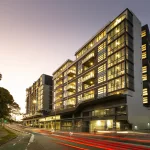From film-makers to digital gaming developers to fiction publishers, creative content providers are turning to Asia’s emerging middle class for new audiences.
According to the Media Development Authority of Singapore (MDA), Asia Pacific is the world’s fastest growing region for publishing and as a result Singapore, widely seen as the regional gateway, has enjoyed an influx of international players as well as growth in domestic publishers. This upward trend is welcome relief for an industry that has seen traditional Western bookshops forced out of business by online distributors and e-books.
So what’s driving it? Greater economic prosperity of course, but also, according to Bunsho-san, Managing Director of Shogakukan Asia, a growing awareness across Asia of the importance and value of creative skills as a key driver of the growing appetite for reading material that’s both educational and fun.
THE SHOGAKUKAN ASIA STORY
Sitting at a table strewn with Japanese comics, or manga, craft books and a giant encyclopaedia of dinosaurs, Bunsho Kajiya’s passion for children’s publishing is clear. Managing Director of Shogakukan Asia, the newly-established, 100 per cent-owned Singapore subsidiary of the famous Japanese publishing house, Bunsho-san speaks with the enthusiasm of a man on the crest of a wave.
“In the US, Japan and Europe the manga business is already mature. The artists and audiences are getting older and their children don’t necessarily love comics like their parents did. But in Asia the middle class market is growing and their children are interested in this sort of material. The continent is at a different stage of childhood cultural development and experience and the middle classes are eager for entertainment that aids education, like comics and craft books. It’s an exciting time.”
In Singapore and across Asia, governments have started to invest in education not just in terms of hardcore mathematics and science, but also in the arts as well. Bunsho-san would like to see more flexibility for children to be free within education. It’s not all about exams. “They need more space for arts and sports, which doesn’t mean they have to become artists or sports people, but that they’ll be equipped with creativity and problem-solving skills that are crucial in every walk of life. We want to be part of that growth by providing those tools.”
Shogakukan Asia’s long-term vision is to generate original content from Singapore, joining leading publishers like Pearson, McGraw-Hill Education (Asia) and John Wiley, creating content and conducting sales and marketing for the region.
Their more immediate to-do list includes the development of a digital strategy, for which they cite Singapore’s rigorous Intellectual Protection laws, the most stringent in Asia, as a key reason for moving to the city-state. They also plan to harness Singapore’s growing rank of agencies specialising in digital delivery, advertising and analytics.
These so-called “enablers” represent the fastest area of growth within the Singaporean digital community. According to a recent survey from Deloitte they grew at a Compound Annual Growth Rate (CAGR) of 51 per cent between 2008 and 2012, with the analytics subsector booming by 245 per cent.
2014 ACTIVATE CONFERENCE
Little wonder global media giant Guardian News & Media (GNM) has chosen Singapore as the location for its 2014 Activate Conference, which will see influential figures from across the digital, media and IT sectors come together to discuss the new economics of content and the role of the open internet in shaping the world’s future. GNM publishes the third largest English-speaking newspaper website in the world and Activate Singapore is its first event in Southeast Asia.
As mobile devices and social media see increased proliferation, analysts at professional services giant PwC expect more mature markets to lead growth in spending on digitally-delivered media. Singaporeans are sophisticated mobile and social media users, who social gaming developers are keen to serve, as well as catering for the wider Asian markets from Singapore soil. Japanese social game developer Gumi Asia and and global internet company DeNA have both opened offices on the island in the past two years.
THE GROWING CREATIVE SPHERE
With demand for other creative content, including films and television programming also growing across the region, it appears the sun is shining in all corners of the creative landscape. In a recent global study of Entertainment and Media (E&M) businesses, analysts at professional services giant PwC cited growing middle classes and increased urbanisation as key drivers of an expected E&M boom before 2017. China and Indonesia are in the top nine growth markets expected to enjoy compound annual growth rates more than double those of the industry as a whole. In 2008 they accounted for 12 percent of total global revenues, rising to a predicted 22 percent in 2017.
The access Singapore provides to these emerging regional markets, as well as to a local, tech-savvy consumer base is attracting increasing numbers of creative organisations to the island. RTL CBS, a joint venture between entertainment network RTL Group and television and film producers CBS Studios International, has established its regional headquarters in Singapore to manage and distribute general entertainment channels for the region. This isn’t without challenges for the city-state as demand for creative and digital skills soar.
NURTURING UP-AND-COMING TALENT
Singapore’s talent pipeline is developing to keep ahead of sector growth, with the establishment of innovative educational institutions. From their subsidiary in Singapore’s Mediapolis district, Japanese games publisher NAMCO BANDAI will collaborate with the Singapore government, universities and polytechnics to attract and develop a new generation of creative minds for the evolving sector. Meanwhile DigiPen, Singapore’s Institute of Technology, is the world’s first college to offer a bachelor’s degree programme dedicated to digital gaming development.
This new generation of creatives won’t be short of opportunity. Back at Shogakukan Asia’s new offices, empty desks await the new recruits Bunsho-san plans to hire in the coming months and years. They’ll find themselves at the heart of a creative groundswell, which Bunsho-san hopes will have profound and wide-reaching effect across the Asian economy: “Our headoffice mission is to provide possibilities and dreams for the future. It’s about creativity, wherever that may lead. Because in every area of life, even in the finance industry, you have to have creativity for problem solving. It’s part of everything we do.”


























